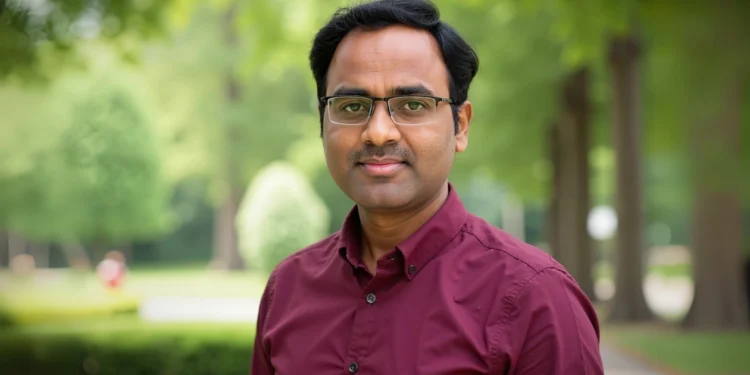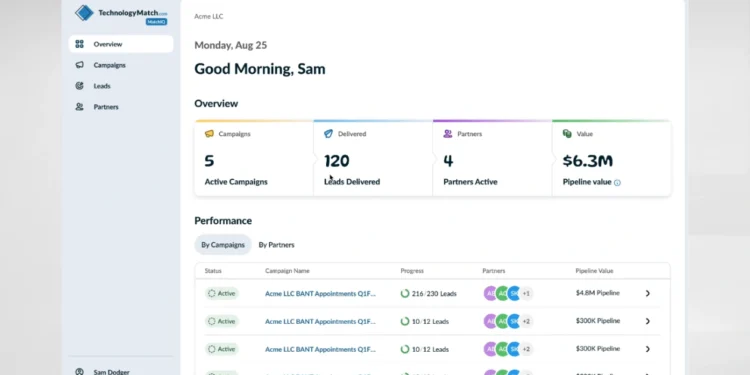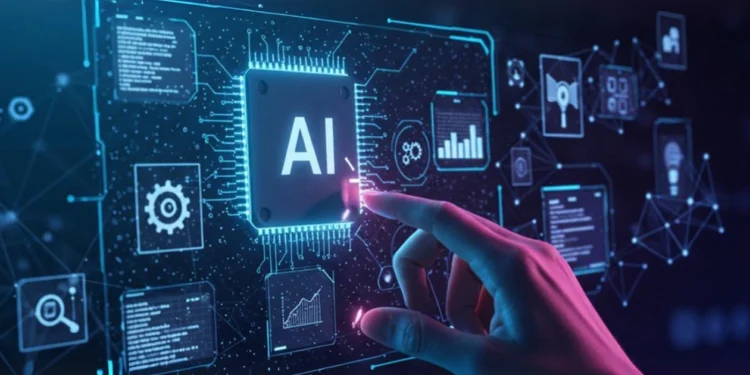Venkata Narasareddy Annapareddy is a brilliant AI expert who is reshaping how we think about AI integration and performance. He has a strong background in enterprise integration, cloud computing, and renewable energy systems. His work combines deep technical know-how with forward-thinking ideas. He’s led projects at places like SunPower and the University of Maryland, making complex systems talk to each other better, faster, and smarter.
But it’s not just about systems and software. Venkata brings a human element to tech, always thinking about how solutions impact people and communities. From using AI to boost solar energy performance to creating smarter, more reliable data flows, he’s solving today’s problems with tomorrow’s tools. In this exclusive interview, he shares his thoughts on optimizing performance, managing modern IT architecture, and what’s coming next in AI-driven innovation.
Q1: Venkata, thank you for joining us. Your expertise is truly a privilege to tap into. Your journey through enterprise integration and cloud innovation is truly impressive. Can you share what first sparked your interest in system architecture, and how that initial draw has shaped the momentum of your career since?
Venkata Narasareddy: My interest in system architecture was sparked early in my career when I was exposed to the complexities of integrating disparate systems in enterprise environments. I was fascinated by the challenge of creating seamless data flow and scalable solutions that could adapt to changing business needs. This fascination quickly turned into a passion for designing end-to-end architectures that not only solved immediate technical issues but also laid the foundation for long-term innovation.
Over time, this initial draw evolved into a guiding force behind my professional trajectory. It led me to take on increasingly complex roles that involved strategic decision-making, cross-functional collaboration, and the implementation of cutting-edge technologies such as AI and cloud-native platforms. My role at SunPower Corporation is a prime example, where I was able to architect and optimize critical integration pipelines using tools like Informatica IICS and Oracle Integration Cloud. These experiences have continually reinforced my belief that thoughtful system architecture is a key enabler of digital transformation and organizational agility.
Q2: At SunPower Corporation, you played a huge role in enhancing data and system integration, especially with tools like Informatica IICS and Oracle Integration Cloud. To what extent is this approach aligned with both technical scalability and SunPower’s broader mission for sustainability and clean energy adoption?
Venkata Narasareddy: At SunPower Corporation, our integration approach was deeply aligned with both the company’s technical goals and its overarching mission for sustainability. By leveraging platforms like Informatica IICS and Oracle Integration Cloud, we were able to architect solutions that supported scalable, secure, and real-time data exchange across systems critical to operations, customer service, and energy production analysis.
These integrations enabled a more responsive and data-driven infrastructure, which is vital for optimizing the performance of solar assets and energy systems. More importantly, they empowered predictive analytics and real-time monitoring that directly support SunPower’s clean energy objectives, such as reducing emissions, enhancing energy efficiency, and achieving operational transparency. Our integration strategy was not just a technical win; it was a crucial enabler for SunPower to move closer to its net-zero freight emissions goal by 2030 and deliver smarter, more sustainable energy solutions to its customers.
Q3: In your LinkedIn profile, you emphasize “fostering a culture of knowledge sharing and continuous improvement” within technical teams. How do you translate this philosophy into actionable leadership strategies, especially during complex, multi-platform integrations?
Venkata Narasareddy: Fostering a culture of knowledge sharing and continuous improvement is foundational to how I lead technical teams, particularly during complex integrations. I translate this philosophy into actionable strategies by establishing structured forums, such as regular knowledge exchange sessions, internal tech talks, and documentation best practices, to promote transparency and shared learning.
During multi-platform integrations, I also ensure that cross-functional teams have clearly defined communication channels and roles, which not only prevents silos but encourages collaborative problem-solving. I mentor team members to take ownership of their contributions and to think beyond immediate tasks by understanding the broader architectural vision. Additionally, I implement retrospectives and performance reviews post-integration to evaluate what went well and identify areas for refinement. This continuous feedback loop empowers the team to iterate and evolve with each project, aligning with both individual growth and organizational success.
Q4: In your work at SunPower, as described in their corporate mission, the company aims to reach net-zero emissions from downstream freight by 2030. How did your integration architecture efforts help support this goal through enhanced data flow or predictive modeling?
Venkata Narasareddy: My integration architecture efforts at SunPower played a strategic role in supporting the company’s goal of achieving net-zero downstream freight emissions by 2030. We designed and implemented a data integration framework that enabled seamless connectivity across logistics, supply chain, and energy systems. By ensuring real-time, high-fidelity data flow between platforms, we could track freight emissions with greater accuracy and transparency.
Furthermore, we leveraged predictive modeling capabilities by integrating AI/ML tools into the architecture. This allowed us to analyze historical freight data and forecast emissions trends based on different logistical scenarios. The insights generated helped SunPower make data-driven decisions around routing optimization, carrier selection, and load balancing, each contributing to reduced emissions and greater sustainability.
By embedding environmental intelligence into the data flow itself, we effectively turned integration architecture into a catalyst for sustainability innovation.
Q5: Your professional bio highlights expertise in AI-enabled integrations and predictive modeling for energy systems. Can you walk us through a specific instance where deep learning or analytics led to a breakthrough in energy efficiency or grid stability for a client or project?
Venkata Narasareddy: One impactful instance where AI-driven analytics led to a breakthrough was during a project aimed at optimizing energy efficiency for a distributed solar grid system. We implemented a predictive modeling framework that used deep learning algorithms to analyze large volumes of time-series data collected from IoT-enabled solar panels and smart meters.
By training the models on historical production and consumption patterns, we were able to forecast peak load times and solar generation outputs with high precision. This predictive capability enabled proactive grid balancing and smarter energy storage utilization, significantly reducing energy wastage and peak load stress on the grid.
The insights also supported dynamic pricing strategies and real-time adjustments, helping both energy providers and consumers achieve higher efficiency. This project not only improved operational resilience but also reinforced the value of integrating AI into energy systems to drive tangible environmental and financial outcomes.
Q6: With recent experience at the University of Maryland, Baltimore, what unique integration challenges do educational institutions face today, and how do you see AI reshaping academic systems and digital learning environments in the years to come?
Venkata Narasareddy: Educational institutions like the University of Maryland, Baltimore, face unique integration challenges due to the diversity and legacy nature of their systems, ranging from student information systems to learning management platforms and administrative tools. These systems often operate in silos, making real-time data exchange and unified experiences difficult to achieve.
During my tenure, we focused on creating middleware solutions and APIs to bridge these systems, ensuring smoother workflows across admissions, course management, and financial aid processing. A major hurdle was harmonizing data standards across departments, which we addressed through robust data governance frameworks.
Looking ahead, AI is poised to profoundly reshape academic systems. From personalized learning pathways and AI-powered tutoring to predictive analytics for student retention, the potential is vast. AI can also automate administrative processes, enhance virtual learning environments, and enable real-time performance insights for educators. The institutions that invest in integrated, AI-ready architectures today will be best positioned to lead in delivering the next generation of digital education.
Conclusion
Venkata’s approach combines real-world experience with a creative mindset that keeps pushing boundaries. He is always several steps ahead through smarter integrations, energy-efficient AI applications, and a better user experience. In this interview, what stood out most was his belief in purpose-driven tech tools and platforms that contribute immensely.
Venkata is shaping systems that are intelligent and responsible. As businesses look to adapt, grow, and build resilient digital environments, this interview becomes essential as it offers a rare glimpse into the mind of someone who doesn’t just architect systems but redefines them.










